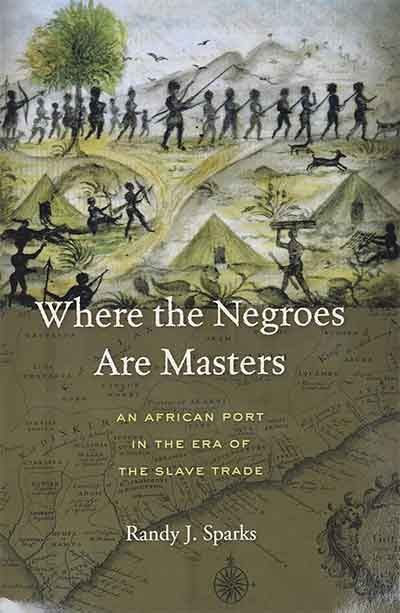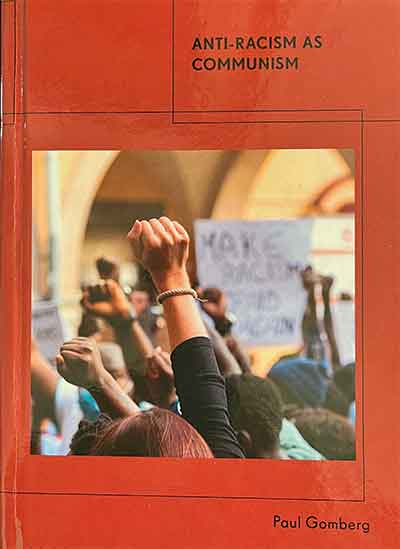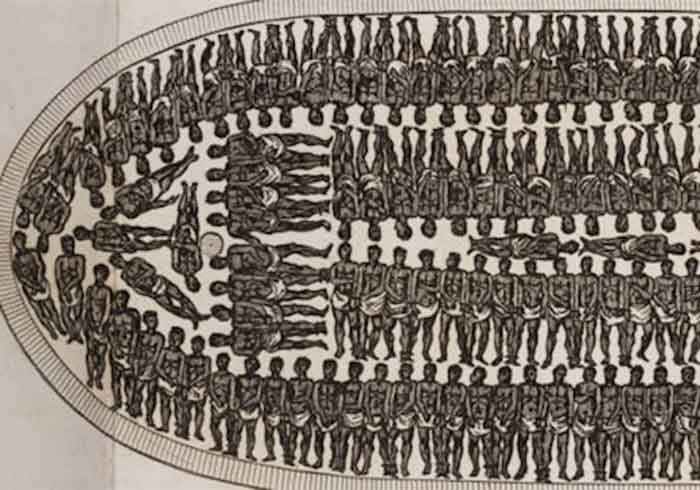
“What they wouldn’t do, the white folks, to keep you from having a history, the better, after all, to protect theirs.”
The Man Who Cried I Am, John A. Williams
In an interview for the New York Times in 1987, Saul Bellow, the 1976 Nobel Prize winner for literature, asked:
“Who is the Tolstoy of the Zulus, the Proust of the Papuans? I’d be glad to read him.”
This question makes no sense, but it reveals Bellow’s belief in the superiority of Western culture. The art of the Zulus and Papuans, like that of any other people, develops within the context of their respective histories and cultures. The novels of Tolstoy and Proust are products of European culture at a certain period in its history. For Saul Bellow, the culture of the Zulus and Papuans was not only different from Western culture, but inferior. This is white supremacy’s fundamental belief.
In his novel Mr. Sammler’s Planet, published in 1970, Bellow had already revealed all his racism and his alliance with the political project of white supremacy. Knowing this work and the context in which it was produced can help us better understand our own time.
The 1960s in the United States
In the 20th century, the 1960s were a period of intense social change throughout the West. They were the years of the struggle for sexual liberation, the growing protests against the Vietnam War, the anti-colonial movements and the questioning of patriarchy and its imposed hierarchies. In the United States, they were above all the years of intense mobilization in the struggle for civil rights for African-Americans, the greatest challenge to white supremacy.
The ruling class panicked. The Trilateral Commission, a global organization that brought together political and business leaders founded by David Rockefeller in 1973, issued a famous report warning that the wave of civil society insubordination had to be contained. As Chomsky wrote (1):
“What particularly alarmed the Trilateral scholars was the ‘excess of democracy’ during the time of troubles, the 60s, when normally passive and apathetic parts of the population entered the political arena to advance their concerns: minorities, women, the young, the od, working people…”
The ruling class felt it was necessary to stop the ‘excesses of democracy’ of this period and even before the decade was over began to organize the reaction: a veritable cultural war against the activism of the 60s.
In an interesting analysis of the film Dirty Harry by director Don Siegel, released in 1971 in the USA, Quentin Tarantino wrote in his book Cinema Speculation:
“And just one look at the robbers in Dirty Harry and you can tell they got their wardrobe in the Black Panther section of the Warner Bros. costume department. For many older white Americans, angry black militants scared them more than the Manson “Family”, the Zodiac Killer, and the Boston Strangler combined. The hippies disgusted them. Because the hippies were their children, and they were disgusted with their children. Hippies burning the American flag in protest of the Vietnam War made them livid with anger. But black militants scared the fuck out of them. The anger, the rhetoric, the agenda, the uniform, the posing for pictures with automatic weapons, their hatred of the police, the dismissal of white America.”
Dirty Harry was one of the first films of the cultural reaction and Saul Bellow was one of those older white men described by Tarantino, frightened by the militancy of African-Americans, especially the Black Panthers. For Bellow and the US ruling class, it was clear that challenging white supremacy jeopardized the established order and the entire system of capitalist domination inside and outside the US. Mr. Sammler’s Planet is a war declaration on the African-American civil rights movement.
Mr. Sammler’s Planet and Respectable Racism
Saul Bellow began writing Mr. Sammler’s Planet in 1966, the same year that Huey P. Newton and Bobby Seale founded the Black Panther Party in Oakland, California. The book was published in 1970, the year that French writer Jean Genet first came to the United States to support the Black Panther.
In the book, the character Mr. Sammler is a Jewish Holocaust survivor and an embodiment of the humanist values of European culture. The novel is set in the late 1960s in New York and its central episode is Mr. Sammler’s encounter with an African-American pickpocket on a bus. Saul Bellow describes the pickpocket thus:
“The pickpocket himself wore dark shades. He was a powerful Negro in a camel’s-hair coat, dressed with extraordinary elegance (…). The Negro’s perfect circles of gentian violet banded with lovely gold turned toward Sammler, but the face showed the effrontery of a big animal.”
And also:
“(…) this striking, arrogant pickpocket, this African prince or great black beast.”
“Big animal” and “great black beast” are just two examples of the racist language used by Bellow.
About another character in the novel, Angela, Mr. Sammler reflects:
“Angela sent money to defense funds for black murderers and rapists. That was her business of course.”
Bellow makes a point of indicating that the defense funds were “for black murderers and rapists”. Apparently, there were no white murderers or rapists.
This comment has an implication that may go unnoticed today but was very clear to readers at the time: from 1955, when Rosa Parks refused to give up her seat on a bus to a white person, and throughout the 1960s, several funds were set up for the legal defense of African-American militants in the American South engaged in the struggle against racial segregation. These activists were often arrested and the defense funds were the means found to pay the lawyers and the bails needed to get them out of jail.
Martin Luther King Jr. became known due to his commitment to these struggles against racial segregation on buses – African Americans had to sit at the back – in the late 1950s. The boycott of segregated buses was the beginning of the growing mobilization of the civil rights movement.
In Mr. Sammler’s Planet, Saul Bellow transforms this symbol of the civil rights movement, the bus, into the center of the action of an African-American thief, a “great black beast.” Bellow is saying that racial integration on the buses has only led to good white citizens being robbed with impunity by “great black beasts.” The defense funds that were so important to the civil rights movement, on the other hand, are transformed by Bellow into funds for the defense of “black murderers and rapists”.
Saul Bellow’s attack on the African-American community in his novel continues in this other passage of the book:
“Sammler had apparently agreed to give this talk for a student project to help backward black pupils with their reading problems. “
Once again, Bellow makes a point of stating that they are “backward black students” with “reading problems”. They could simply have been backward students with reading problems – but Bellow indicates that they were “black students” apparently because backward white students with reading problems are an impossibility in the mental world of white supremacy.
Bellow’s racist attack also extends to Latinos and the peoples of the Global South, as in this passage:
“Of course the phone was smashed. Most outdoor telephones were smashed, crippled. They were urinals, also. New York was getting worse than Naples or Salonika. It was like an Asian, an African town, from this standpoint.”
There is also a dialog between other characters in Bellow’s book that seems to me to be of fundamental importance due to what it reveals about the mentality of white supremacy:
“Of course,” Wallace said, ‘‘the blacks speak another language. A kid pleaded for his life—”
“What kid?”
“In the papers. A kid who was surrounded by a black gang of fourteen-year-olds. He begged them not to shoot, but they simply didn’t understand his words. Literally not the same language. Not the same feelings. No comprehension. No common concepts. Out of reach.”
(…)
“The child died?”
“The kid? After some days he died of the wound. But the boys didn’t even know what he was saying.”
What Bellow is trying to do here is invert the history of African Americans in the United States and deny all the violence they have suffered. That African peoples were enslaved and forcibly brought to America by whites doesn’t seem to be part of history as Bellow sees it in this passage. And all the violence, oppression and injustices suffered by the African-American community in the same country in which Bellow lived does not seem to be part of his consciousness. It’s important to remember here some facts from Bellow’s adult life in the USA that he ignores.
As in the passage quoted above Bellow creates a scene of violence by young African-Americans, a comparison with some real examples of white supremacist violence against young African-Americans can be enlightening.
In September 1963 – Saul Bellow was 48 at the time – a bomb was placed in a church attended by African-Americans in the southern city of Birmingham. The explosion killed 11-year-old Denise McNair and 14-year-olds Cynthia Wesley, Carole Robertson and Addie Mac Collins.
This murder outraged the Birmingham community. Journalist Karl Fleming, in an article published at the time (2) reported the following:
“As word of the bombing spread, rock fights between Negroes and whites broke out at street corners. (…) In the Northwest corner of the city, James Ware, a 16-year-old Negro, was bicycling homeward with his brother Virgil,13, on the handle bars. On Docena Road a red motorbike, decorated with Confederate stickers and carrying two white youths, approached them. The boy riding double pulled out a pistol, fired twice. Virgil pitched off the handle bars. “Jim, I’m shot,” he cried on the ground. “No, you ain’t. You ain’t shot. Get up, Virg”, James said. Virgil, .22-caliber bullets in his head and chest, then died. The next day, two 16-year-old white boys, Michael Lee Farley and Larry Joe Sims, confessed. Farley drove the motorbike. Slims fired the shots. Earlier Sunday they had attended Sunday school. In the afternoon they attended a segregationist rally at a Go Kart track in nearby Midfield. Both were Eagle Scouts and neighbors considered them “model” Birmingham youths. They didn’t know Virgil Ware. Why did they kill him? “They didn’t give any reason,” said the sheriff’s office.”
White supremacist violence was commonplace in the US throughout Saul Bellow’s adult life. More than 50 bomb attacks were carried out on churches attended by African-Americans in the American South throughout the 1960s, not to mention the many murders and beatings that terrorized the African-American community. However, Bellow blames the victims of white supremacist violence, stating that they “didn’t have the same feelings” as whites. There was “no comprehension, no common concepts” between whites and African-Americans who were “beyond the reach” of white civilization and its virtues. This denial of the violence of white supremacy and the inversion of history is fundamental to the construction of the racist narrative that started the reaction against the legacy of the civil rights movement of the 1960s and which has brutal consequences today with the mass murder of the Palestinian people.
Mr. Sammler’s Planet, critically acclaimed upon its publication and awarded the National Book Award in 1971, reveals how deeply racism is still rooted in Western culture. This is respectable racism, disguised as humanism, wrapped in the aura of European high culture represented by Mr. Sammler.
Cultural Narratives of White Supremacy
The white supremacist elite in the US certainly realized the importance of Saul Bellow’s contribution for the cultural narratives that were fundamental to legitimizing their power and maintaining the established order.
At the end of a violent decade of civil rights struggles, when Medgar Evers, Malcolm X and Martin Luther King Jr., the best known among many others, were brutally murdered for challenging white supremacy, the publication of a literary work in which the only African-American character is a pickpocket, is a real achievement to be celebrated by white supremacy. Saul Bellow not only completely ignores the civil rights movement, but even denies any importance of the African-Americans in American society. They are portrayed as problems – children who have learning problems and do not have feelings, rapists, murderers and thieves – who only disturb the good order of society. This is an important cultural narrative to be maintained by white supremacy, but it is not the only reactionary cultural narrative in this work.
In this other passage in Mr. Sammler’s Planet, Bellow subtly introduces another historical inversion of enormous importance for the construction of reactionary cultural narratives:
“There came Napoleon, a gangster who washed Europe well in blood. There came Stalin, for whom the really great prize of power was unobstructed enjoyment of murder.”
It’s curious that Hitler isn’t mentioned in this sentence.
Mr. Sammler’s Planet was written in the middle of the Cold War. At the end of the 1960s, the Nazis were no longer a problem for the ruling elites. On the contrary, Nazi-supporting industrialists in Germany and other fascists in France and Italy had participated in the reconstruction of capitalism in Europe after the Second World War. And many Nazis were recruited by the CIA to help fight the new enemies – Stalin and the USSR.
Saul Bellow was Jewish and in his novel about a Jewish Holocaust survivor he says nothing about the fundamental role of Stalin and the USSR in the defeat of Nazi Germany, mentioning Stalin only as a criminal. This is yet another historical inversion of the utmost importance for the construction of reactionary cultural narratives.
It is revealing to compare Saul Bellow’s silence on the USSR and his condemnation of Stalin with what the American Jewish political scientist Norman Finkelstein said in a 2018 interview (3):
“My parents passed through the Nazi Holocaust. Their entire families on both sides were exterminated during the war. Both my parents were in the Warsaw Ghetto until the uprising was suppressed in April 1943. They were then deported to Majdanek Concentration Camp. My father ended up in Auschwitz and in the Auschwitz Death March. My mother was in two slave labor camps. After the war they were in a displaced peoples camp in Austria, and they came over to the US in 1948 or 49’. Both of them were staunch supporters of the Soviet Union, but not because they were communists or even because they were politically engaged – they were not. They supported the Soviet Union because the Soviet Union defeated the Nazis, and they looked at the whole world through the prism of the Nazi Holocaust, and so they felt a real sense of debt to the Soviet Union and the Red Army, to Stalin – in particular to Stalin – and I guess you would call them the last Stalinists until their deaths in 1995. You were not allowed, in their presence, to say even a single word critical of Stalin.”
The contrast between historical reality as described by Norman Finkelstein and Saul Bellow’s inversion of history here is clear. But Bellow’s historical inversion is an important contribution to legitimizing the reactionary cultural narrative that seeks to erase from history the USSR’s and Stalin’s role in the defeat of Nazism.
Saul Bellow and the Joan Peters affair
In 1984, the book From Time Immemorial: The Origins of the Arab-Jewish Conflict over Palestine, by Joan Peters, was published in the United States. The central thesis of this book is that many who consider themselves part of the Palestinian people are not actually Palestinians, but immigrants that came from Syria, Egypt and Saudi Arabia.
Among those who first hailed this publication as a milestone in historiography were the historian Barbara W. Tuchman and Saul Bellow, who declared:
“Every political issue claiming the attention of a world public has its “experts”—news managers, anchor men, ax grinders, and anglers. The great merit of this book is to demonstrate that, on the Palestinian issue, these experts speak from utter ignorance. Millions of people the world over, smothered by false history and propaganda, will be grateful for this clear account of the origins of the Palestinians. From Time Immemorial does not grudge these unhappy people their rights. It does, however, dissolve the claims made by nationalist agitators and correct the false history by which these unfortunate Arabs are imposed upon and exploited.”
On the other hand, Edward Said, in a 1985 article on this book, stated (4):
“The general impression was that Joan Peters had at last done all the work necessary to settle one of the most vexing and persistent problems of the twentieth century. No longer could a scholar or propagandist argue that “the Palestinians” (Peters entitled everyone to enclose the designation of a people in the quotation marks of suspicion) were in fact a real people with a real history in “Palestine.” Her book asserted that their national as well as actual existence, and consequently their claims on Israel, were at best suspect and at worst utter fabrication. In other words, From Time Immemorial relieved Israel and its supporters of responsibility for the refugees created by the establishment of the Jewish state in 1948, and for the subject people of the West Bank and the Gaza Strip.”
A student at Princeton University at the time, Norman Finkelstein, analyzed the statistics and other elements on which Joan Peters based her thesis. On Finkelstein’s work, Edward Said, in the same article cited above, commented:
“Finkelstein showed that Peters’ work was what he called a “hoax”: her evidence was unsound in all sorts of ways; her demographic statistics were inconsistent, mathematically impossible, wildly exaggerated; and, most important, in all the cases he was able to check, she either plagiarized Zionist propaganda sources or deliberately tampered with quotations so as to change their meaning entirely.”
Noam Chomsky also praised Finkelstein’s work of demystification and nowadays Joan Peters and her book are completely discredited and forgotten.
What Joan Peters tried to do with the Palestinian people – erase their history and delegitimize their fight – is exactly what Saul Bellow tried to do with African Americans. Bellow wrote that “people all over the world, suffocated by false history and propaganda” would be enlightened by Peters’ work, which is ironic since he himself had falsified history so much to make propaganda for the myth of white supremacy. And the first step in falsifying history is precisely to denounce true history as false.
Racism, Colonialism and Capitalism
The current mass murder of the Palestinian people by the state of Israel under the silence of the overwhelming majority of Western governments and the mainstream press exposes with blunt clarity the racism of the West. Palestinians are seen as subhuman and their deaths don’t have the same importance or cause the same outrage as the deaths of ‘civilized whites’. Racist narratives such as those created by Saul Bellow play an important role in this process of dehumanizing the darker-skinned, colonized peoples of the Global South.
Capitalism, colonialism and racism are intrinsically linked. Imperialism uses racism to rationalize and legitimize its project of power and white supremacy is the political expression of racism.
The importance of the reactionary cultural narratives that insidiously permeate Western culture, as in the case of Saul Bellow, should not be ignored. The damage they cause is enormous.
The current growth of the far right depends fundamentally on these reactionary narratives that unite Bolsonaro in Brazil with Milei in Argentina, Orban in Hungary with Meloni in Italy and Trump in the USA.
On the streets of the world, however, protests against the massacre of the Palestinians are growing by the day. The spirit of the 1960s is coming back to haunt white supremacy and challenge its narratives and its project of power. In different colors and genders, with anger and indignation, but also with some joy and a lot of creativity, in the South and in the North of the planet, humanity is reacting.
Franklin Frederick is a Brazilian writer and political activist
- Noam Chomsky, “Who Rules the World?”
2) Birmingham: “My God, You’re Not Even Safe in Church” , by Karl Fleming , published in Reporting Civil Rights, Library of America.
4) https://merip.org/1985/10/conspiracy-of-praise/















































